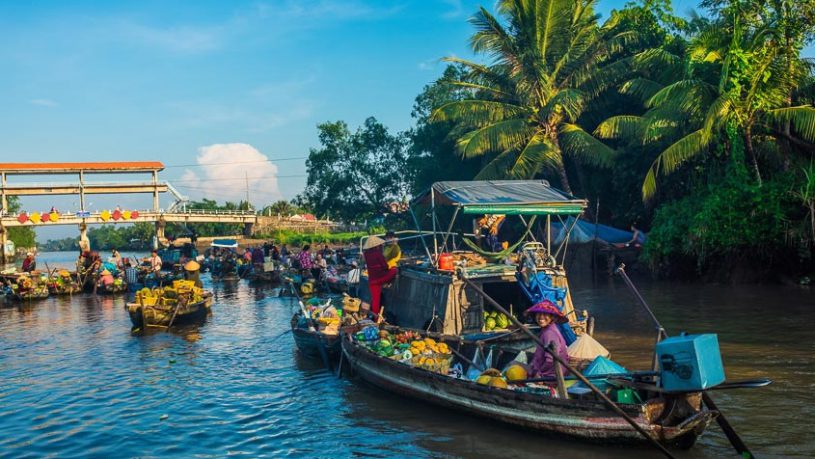Can Tho, the largest city in Vietnam’s Mekong Delta, is often referred to as the region’s “rice bowl” due to its fertile landscape and abundance of rice fields and fruit orchards. This vibrant city offers a unique mix of natural beauty, rich cultural heritage, and friendly locals, making it an ideal destination for travelers seeking to experience the authentic charm of southern Vietnam. Here’s your ultimate guide to making the most of your trip to Can Tho.
1. How to Get to Can Tho
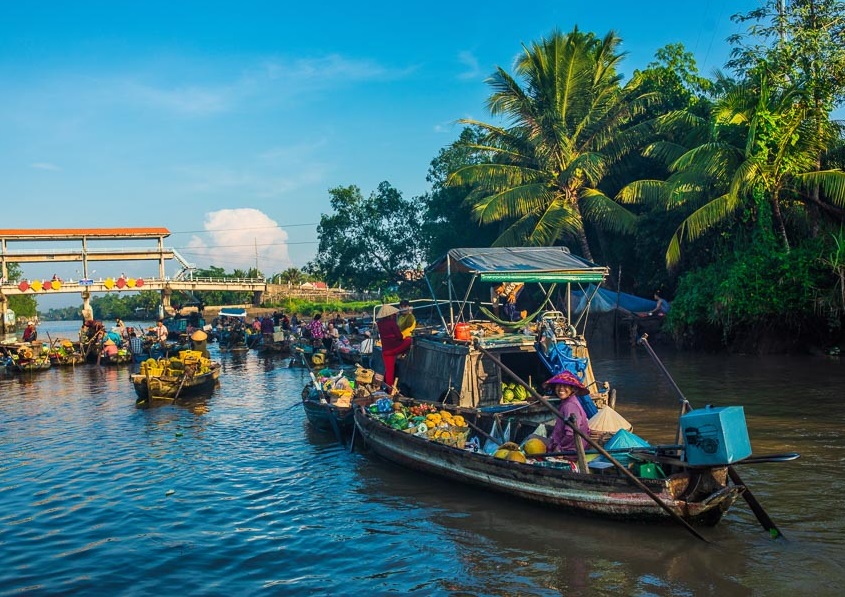
Can Tho is located about 170 kilometers southwest of Ho Chi Minh City, and getting there is relatively easy. The most common way to reach Can Tho is by bus, with frequent departures from Ho Chi Minh City’s Mien Tay Bus Station. The journey takes approximately 3-4 hours. Alternatively, travelers can fly directly into Can Tho International Airport, which has domestic flights from major cities like Hanoi and Da Nang, as well as some international routes.
2. Best Time to Visit Can Tho
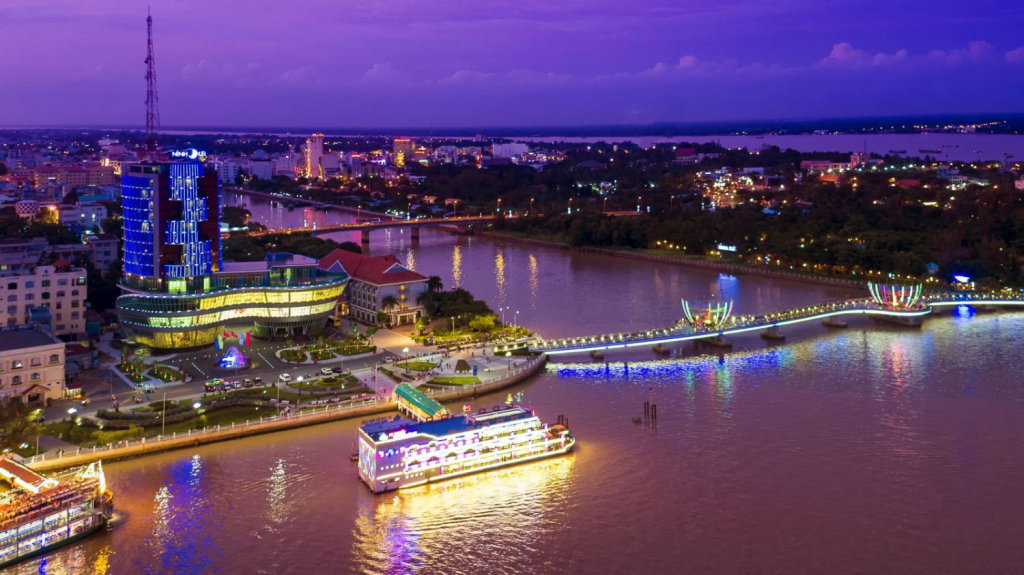
The best time to visit Can Tho is during the dry season, which lasts from November to April. During this period, the weather is warm and pleasant, making it ideal for outdoor activities like boat tours and visiting floating markets. The rainy season, from May to October, brings more humidity and rain, but the landscape becomes lush and vibrant. Visiting during the rainy season also means fewer tourists, making it a more peaceful experience.
3. Top Attractions in Can Tho
Cai Rang Floating Market

No trip to Can Tho is complete without visiting the Cai Rang Floating Market, one of the largest and most famous in the Mekong Delta. Here, boats packed with fruits, vegetables, and local goods float along the river, creating a bustling atmosphere. Arrive early in the morning (around 5-6 AM) to witness the market in full swing, and don’t forget to try fresh fruits and a cup of Vietnamese coffee sold directly from the boats.
Binh Thuy Ancient House
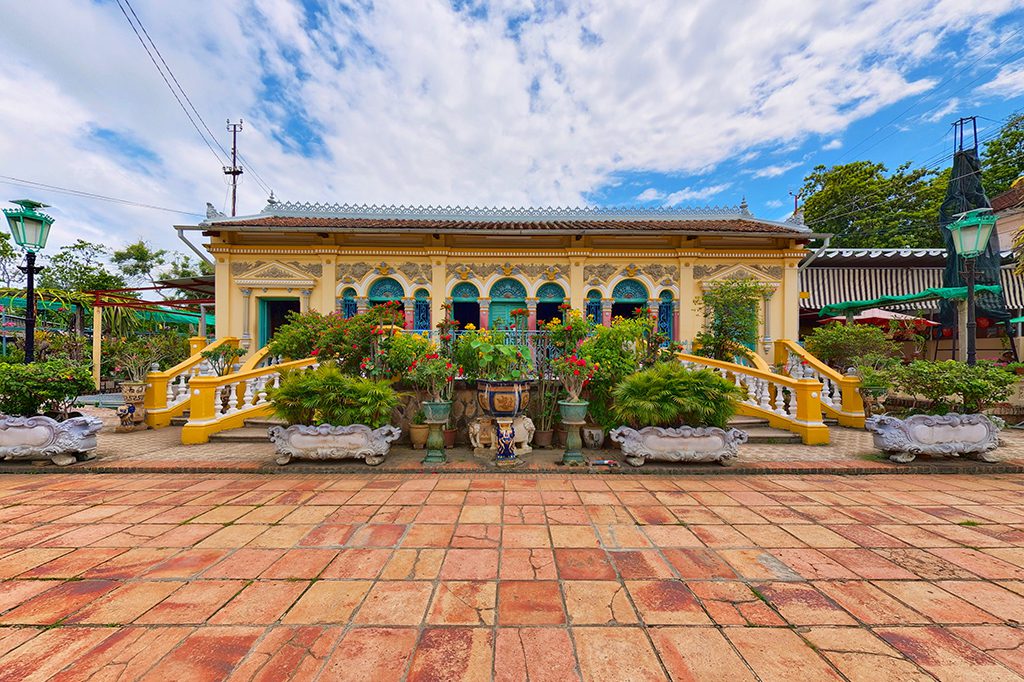
For history and architecture lovers, the Binh Thuy Ancient House is a must-see. This French colonial house, built in 1870, beautifully combines French and Vietnamese architectural styles. It offers a glimpse into the lifestyle of wealthy southern Vietnamese families during the colonial period and has been featured in various Vietnamese films.
Ninh Kieu Wharf
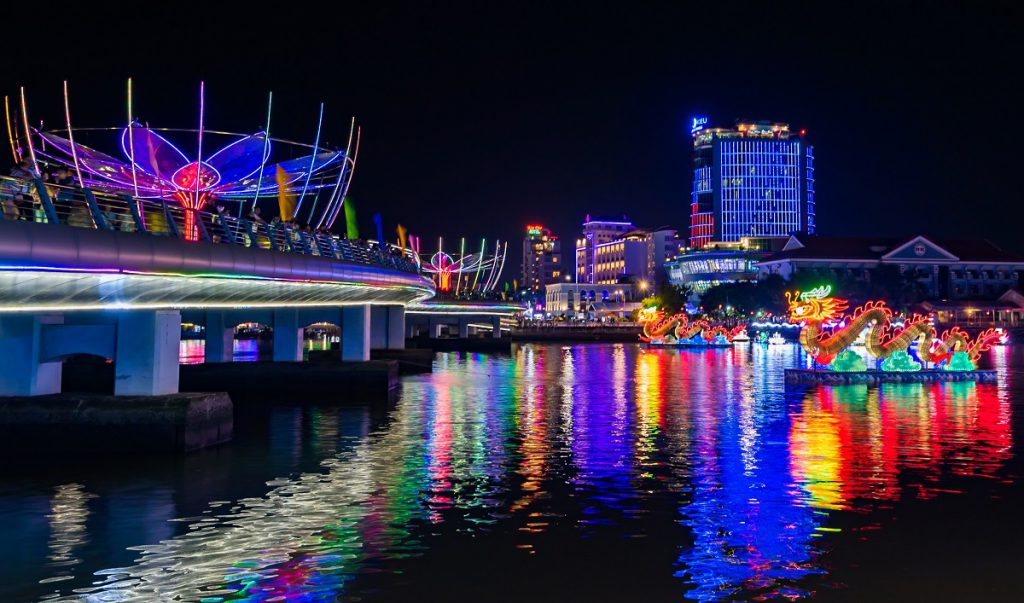
Located along the Hau River, Ninh Kieu Wharf is a lively area where you can take a leisurely stroll and enjoy scenic views of the river. It’s also a great spot to board a boat for a sunset cruise. The wharf area comes alive in the evening, with many street vendors selling local food, making it a great place to experience Can Tho’s vibrant nightlife.
Ong Pagoda
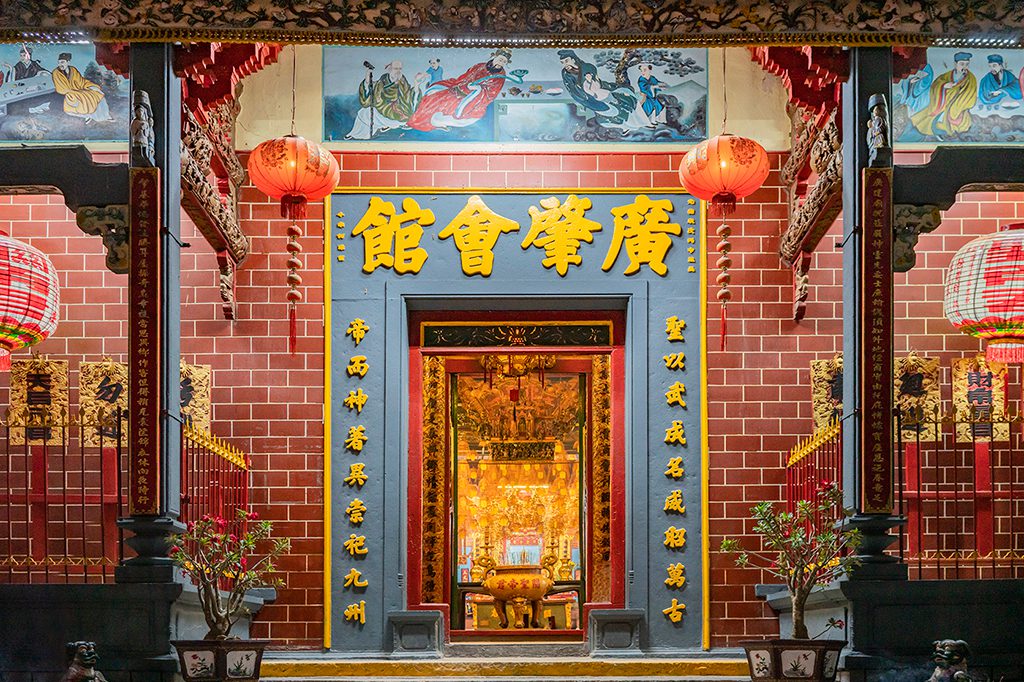
Ong Pagoda is one of the oldest temples in Can Tho and is an important cultural and religious site. Built in the late 19th century by the Chinese community, the pagoda’s vibrant architecture, with colorful lanterns, incense, and intricate carvings, offers a serene yet visually stunning experience. It’s located near Ninh Kieu Wharf, making it a convenient stop during your exploration of the city.
4. Exploring Can Tho’s Countryside
Fruit Orchards and Rice Fields
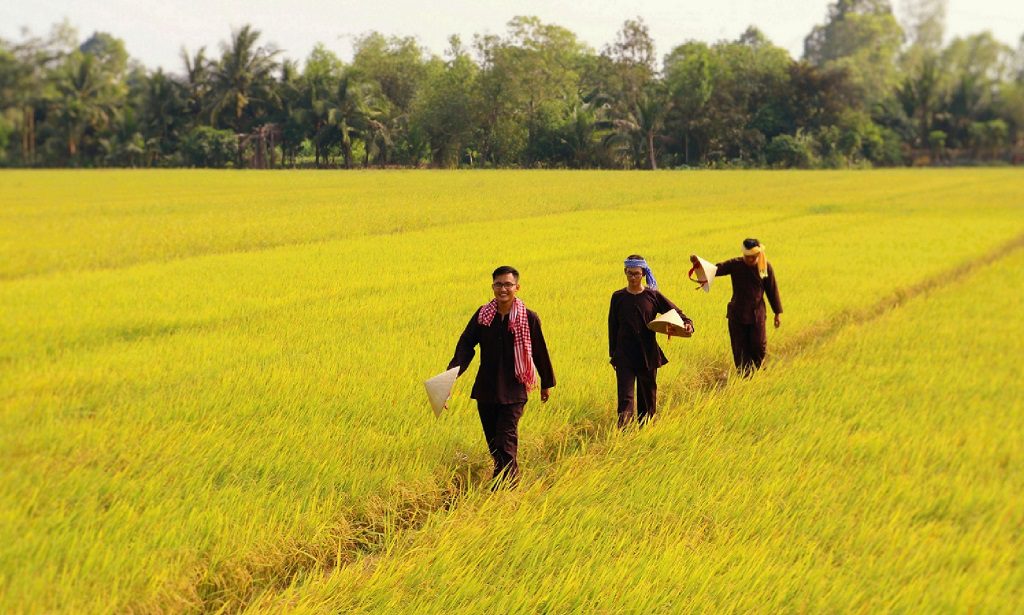
Can Tho is surrounded by lush countryside, home to vast fruit orchards and rice fields. Consider taking a bike ride or a guided tour to visit the orchards, where you can sample tropical fruits like durian, longan, rambutan, and jackfruit. Local farmers often open their orchards to tourists, allowing you to pick fruits fresh from the trees.
Thot Not Stork Sanctuary
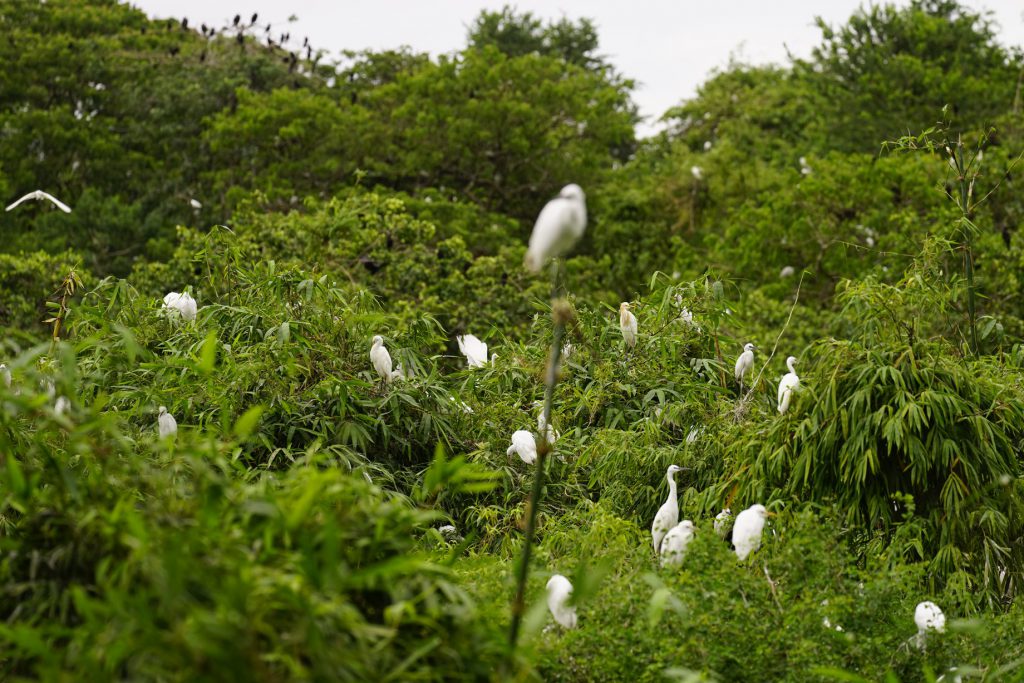
For nature enthusiasts, a visit to the Thot Not Stork Sanctuary is a rewarding experience. Located about 40 kilometers from the city center, this bird sanctuary is home to thousands of storks and other bird species. The best time to visit is in the late afternoon when the storks return to the sanctuary, creating a spectacular sight against the setting sun.
5. Local Cuisine to Try

Can Tho is a food lover’s paradise, offering a wide variety of delicious dishes that showcase the flavors of the Mekong Delta.
Banh Cong: A deep-fried cake made with rice flour, mung beans, and shrimp, served with herbs and fish sauce.
Hu Tieu My Tho: A savory noodle soup that is popular in the Mekong Delta, known for its clear broth and delicate flavors.
Nem Nuong Can Tho: Grilled pork skewers served with fresh herbs and rice paper, allowing diners to wrap their own rolls.
Ca Loc Nuong Trui: Grilled snakehead fish, a popular dish in the Mekong Delta, often served with rice noodles and fresh vegetables.
6. Accommodation in Can Tho
Can Tho offers a range of accommodation options, from budget-friendly guesthouses to luxurious riverside resorts. Staying at a homestay is highly recommended for those who want an authentic experience. Many homestays are located in the countryside, offering visitors the chance to live like a local, participate in farming activities, and enjoy home-cooked meals.
7. Tips for Traveling in Can Tho
- Book an early morning tour: To fully experience the floating markets and the vibrant atmosphere of Can Tho, it’s best to start your day early.
- Carry cash: While larger hotels and restaurants may accept credit cards, many small vendors, especially at floating markets, only accept cash.
- Dress appropriately: Lightweight, breathable clothing is ideal for the hot and humid climate. Don’t forget sunscreen and a hat to protect yourself from the sun.
- Respect local customs: When visiting temples and pagodas, dress modestly and be respectful of the local culture and traditions.
Can Tho offers a perfect blend of cultural exploration, natural beauty, and vibrant local life. Whether you’re navigating the lively floating markets, cycling through the scenic countryside, or savoring the local cuisine, Can Tho promises an unforgettable experience in the heart of the Mekong Delta. With its friendly locals, rich history, and beautiful landscapes, this city is a must-visit destination for travelers seeking an authentic glimpse of Vietnam’s southern charm.

